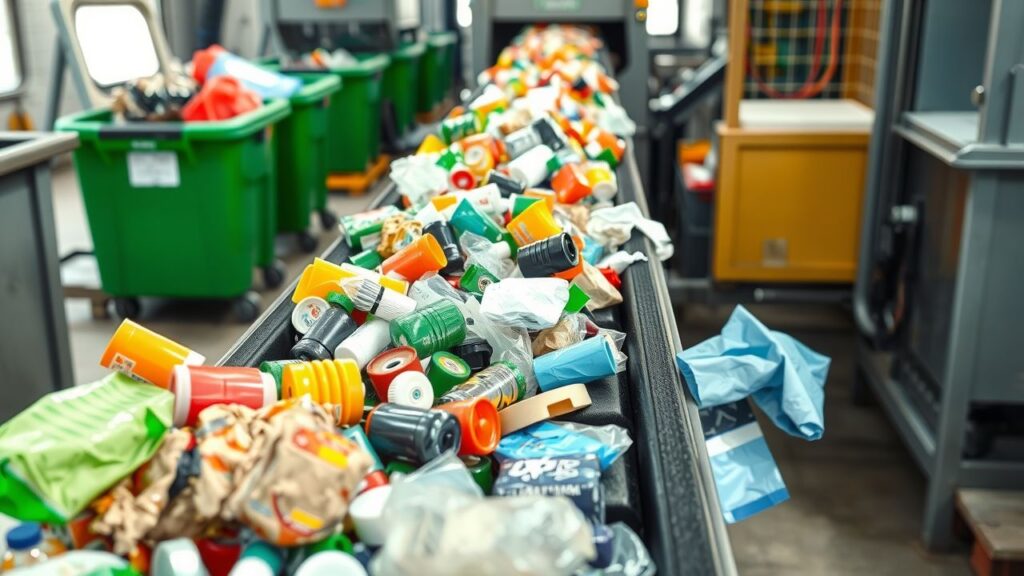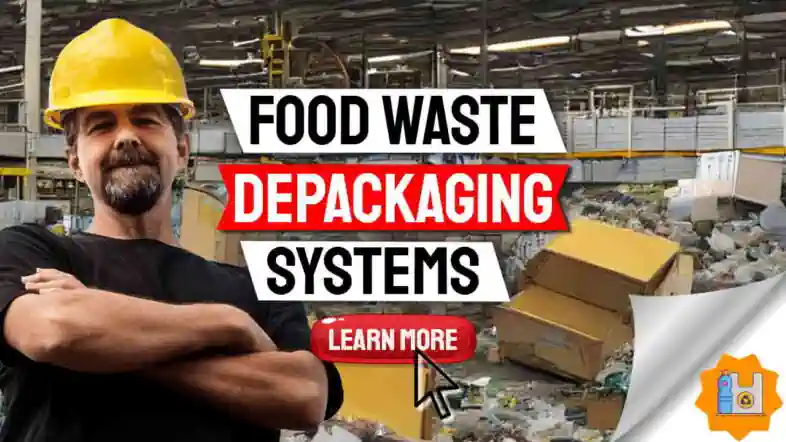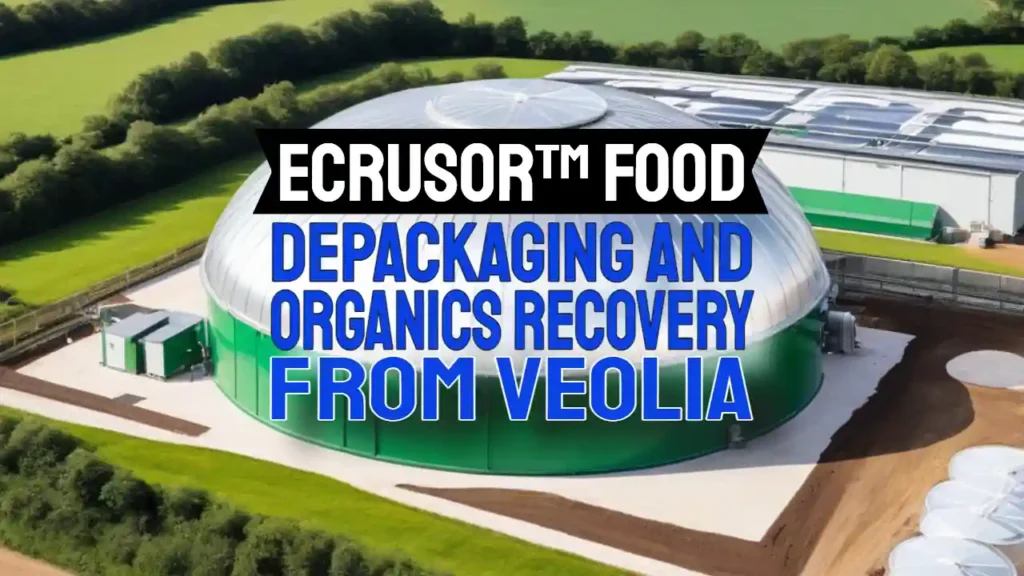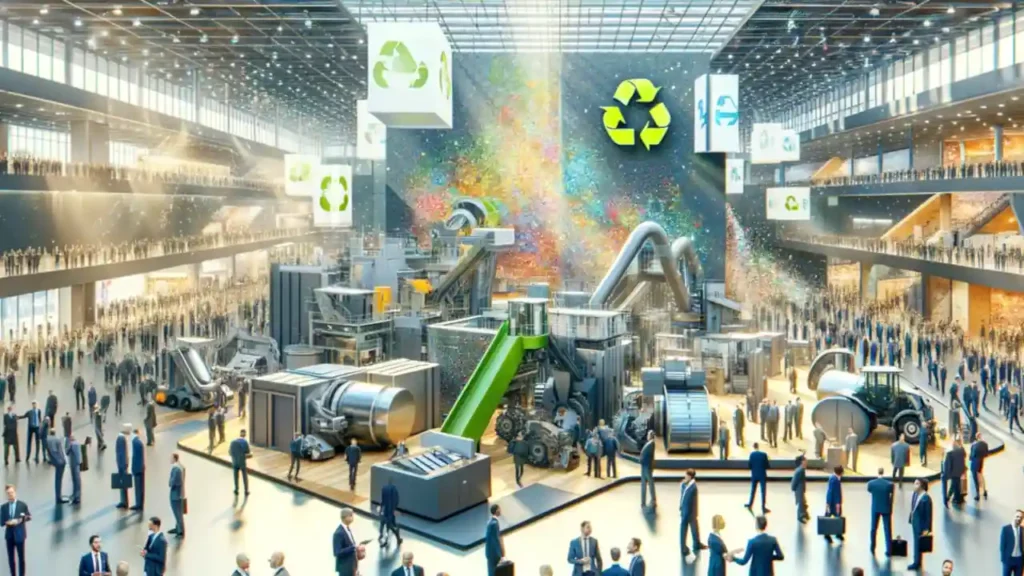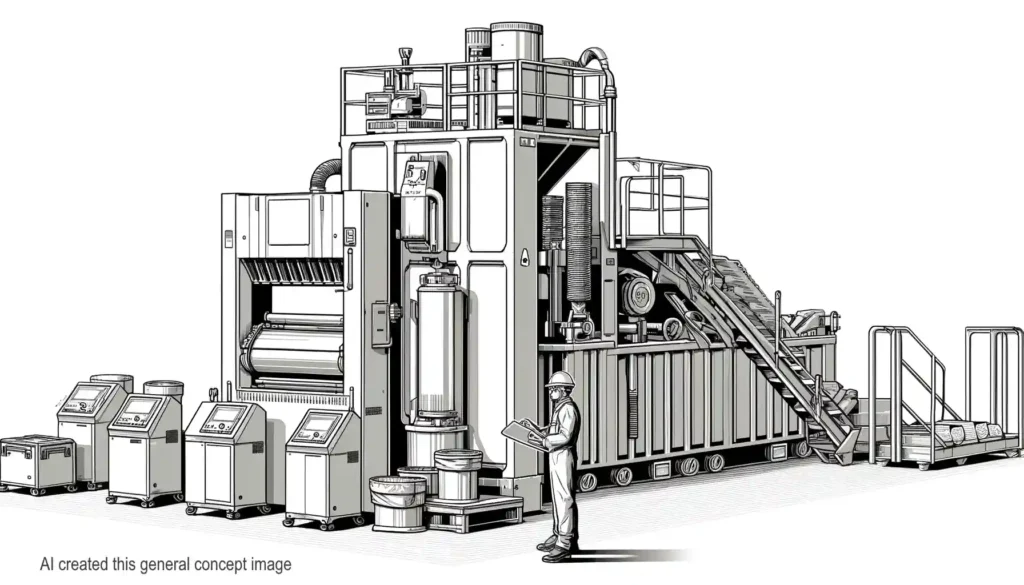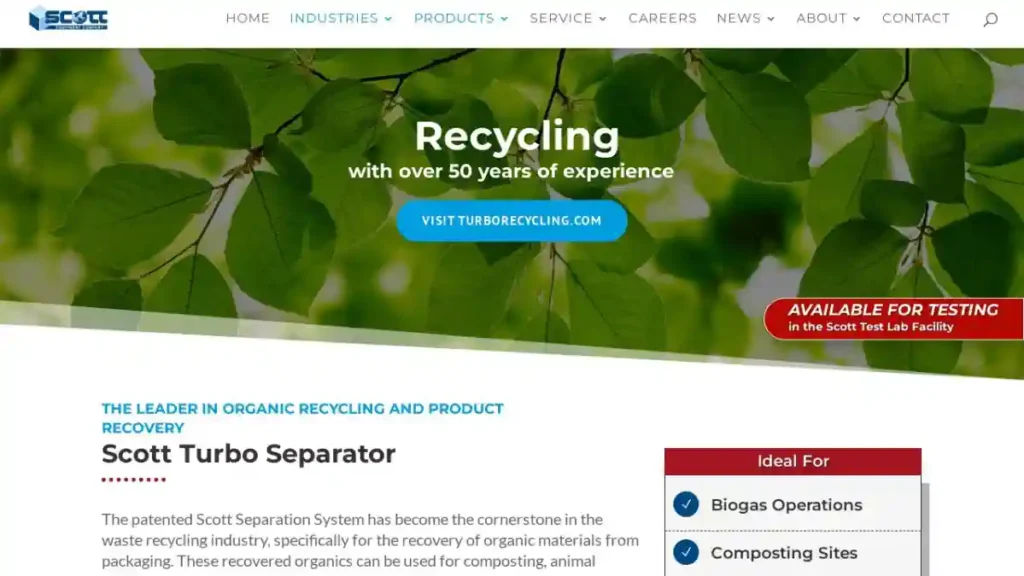Are you buried in plastic packaging waste and unsure how to handle it? It’s a common issue for many businesses. Plastic pollution is a huge problem, affecting wildlife and human health alike.
Did you know that Amazon aims to replace 95% of plastic air pillows with recyclable paper fillers by the end of 2024? This fact shows big companies are making moves to tackle plastic waste.
Our blog will guide you on optimising your own plastic depackaging and recycling processes. You’ll find effective strategies, new technologies, and tips to build efficient recycling networks.
Ready to make a change? Read on!
Key Takeaways
- Adopt Better Packaging: Use reusable and recyclable materials. Amazon plans to replace 95% of plastic air pillows with paper by end of 2024.
- Use Advanced Technology: Implement AI and robotics for sorting plastics. Invest in biodegradable plastics like PHA and PLA.
- Standardise Design: Make packaging simple to recycle by using similar materials. A traffic-light system helps indicate recyclability levels.
- Build Partnerships: Work with local governments, manufacturers, and recycling firms to improve the process. Support academic research on new methods.
- Educate Consumers: Raise awareness about recycling benefits through campaigns. Promote products made from recycled materials in stores.
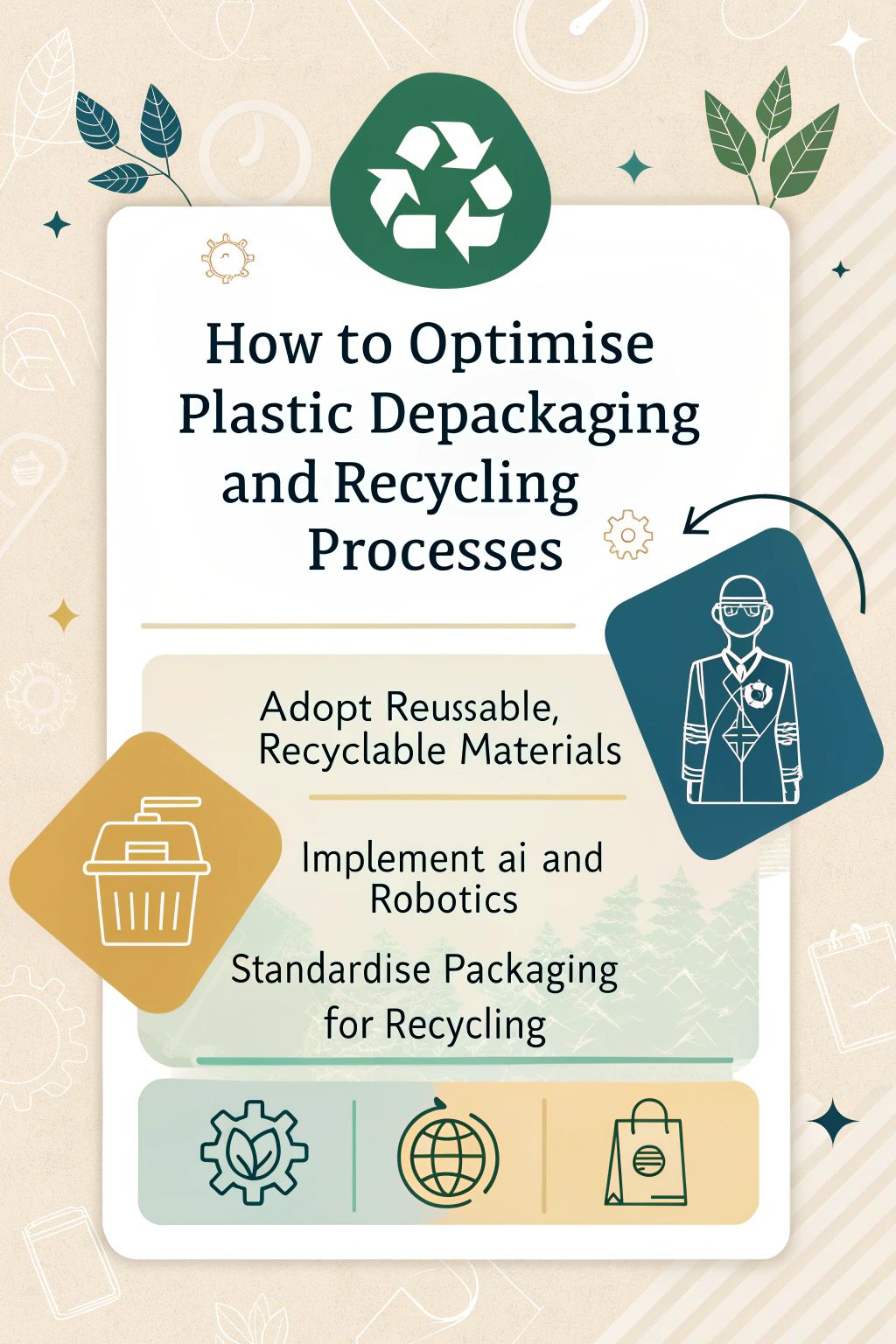
Effective Strategies for Plastic Waste Reduction

Reducing plastic waste starts with making better choices in packaging. Use designs that minimise excess and encourage recycling… this will lead to a more sustainable future!
Embrace reusable and recyclable packaging
Companies should embrace reusable and recyclable packaging to cut down on plastic waste. Amazon, for instance, replaced 95% of its plastic air pillows with recyclable paper fillers in June 2024.
This move aims to prevent the use of around 15 billion plastic air pillows each year.
Shifting to sustainable materials meets growing consumer demand for greener products. Using recycled plastics or bio-based options can also lower environmental impact. Businesses need to consider both reuse and recyclability in their product packaging strategies to support a circular economy.
Optimise packaging designs
Optimise packaging designs to reduce waste and help the environment. Use less plastic material by making packages thinner or smaller. This can save money for manufacturers and lower production costs.
Choose materials that are biodegradable or easy to recycle, like high-density polyethylene or PET bottles. Design packages with fewer different materials; this makes recycling easier and more efficient.
For example, using a single type of plastic for both the bottle and its cap helps in mechanical recycling processes.
Use labels that come off easily during recycling. Avoid complex shapes as they make sorting harder. Employ cartonisation software to plan better package sizes and reduce empty spaces in boxes – this lowers energy consumption during transport too.
Building efficiency starts with smart design… simple changes here can lead to big improvements later on!
Promote circular economy initiatives
Promote circular economy initiatives to reduce waste and increase recycling rates. Encourage businesses to design packaging for reuse and recyclability. The EU’s plastics strategy targets single-use plastics and plastic waste, making recycling profitable.
Investing in innovations is crucial. An extra €100 million has been allocated for improving recycling efficiency. Use these funds to develop new methods and technologies. Focus on creating sustainable pathways in plastic packaging.
Circular economies reduce environmental impact.
Technological Advancements in Plastic Recycling
Technological advancements are changing plastic recycling. New sorting methods and eco-friendly materials are leading the way toward a greener future.
Implementation of advanced sorting technologies
Advanced sorting systems improve material purity. They help remove impurities from recycled plastics. AI and robotics make these systems better. They sort quickly and accurately, reducing contamination risks.
Installing these technologies is costly for some recycling facilities. But the long-term benefits are clear—higher-purity materials have a higher market value, making the investment worthwhile.
Innovations in biodegradable plastics offer great promise… let’s explore that next!
Innovations in biodegradable plastics
Innovations in biodegradable plastics are changing waste management. The market for bioplastics will grow from USD $9.2 billion to USD $20 billion by 2026. Key types like Polyhydroxyalkanoate (PHA) and polylactic acid (PLA) come from renewable sources.
These materials break down naturally, reducing plastic waste.
Bioplastics find use in packaging and biomedical fields. For instance, PHA replaces traditional plastic pallets and PETG packaging material. This shift promotes better recycling practices and lessens our reliance on petroleum-based products.
Biodegradable plastics are vital for a greener future, says Dr Jane Smith, an environmental researcher.
Next up: how standardising design can make recycling easier…
Design for Recycling
Standardise packaging to make recycling easier. Use alternative materials that break down faster in the environment.
Standardising design for better recyclability
Standardising design for better recyclability can simplify the recycling process. A traffic-light classification system (Green, Yellow, Red) helps indicate the recyclability compatibility levels of packaging designs.
This clear coding makes it easy to identify which materials are easier to recycle.
Updated guidelines reflect new research and technologies, like those revised in July 2024. Packaging that meets Green standards is more likely to be recycled efficiently. Consistent design elements—such as common shapes and materials—boost material handling and sorting efficiency.
The use of recyclable materials like polyvinyl chloride or reusable slip sheets further aids in this effort.
Switching to alternative, sustainable materials
After standardising design for better recyclability, it’s vital to consider alternative, sustainable materials. Companies today are shifting to eco-friendly options due to environmental goals and changing consumer behaviour.
Materials such as bio-based plastics can reduce the carbon footprint significantly.
Switching from traditional plastics to biodegradable alternatives also helps in waste management. For instance, farmers now use biodegradable mulch films in agricultural production instead of conventional plastic ones.
This move lessens plastic waste and aids soil health over time.
Embrace sustainability through smarter material choices.
Assessing the ecological impact remains key—this includes water usage and carbon emissions linked with production processes. Over-engineered products can benefit from clearly defining their requirements for sustainability, thus optimising resources while ensuring durability and performance.
Building Efficient Recycling Networks
Creating robust recycling networks is crucial. It involves forming partnerships and setting up sustainable systems for plastic packaging management.
Developing partnerships for at-scale reprocessing
Developing partnerships can greatly improve plastic reprocessing efforts. Collaborative work ensures efficient recycling and reduces waste.
- Collaborate with Local Governments
- Partner with local authorities for better waste collection.
- Implement policies supporting recycling initiatives.
- Share resources for public awareness campaigns.
- Engage with Manufacturers
- Work with producers to design packaging that is easier to recycle.
- Encourage the use of recycled materials in new products.
- Develop extended producer responsibility (EPR) programmes.
- Team Up with Recycling Companies
- Form alliances with companies that specialise in mechanical recycling technologies.
- Invest in joint ventures for developing advanced sorting systems.
- Pool resources for research on biodegradable plastics.
- Involve Community Organisations
- Create community-based recycling programmes to gather plastic waste efficiently.
- Educate communities about the importance of proper disposal and recycling practices.
- Offer incentives for households that participate actively in these programmes.
- Partner with Technology Firms
- Collaborate on innovations such as smart bins and tracking systems for waste management efficiency.
- Invest in automation technologies for faster and more accurate sorting processes.
- Link with Academic Institutions
- Support academic research focused on improving recycling methods.
- Leverage student projects for fresh ideas on plastic reprocessing techniques.
- Join Forces with Retailers
– Coordinate take-back schemes where customers can return used packaging.
– Promote products made from recycled plastics within their stores.
- Work with Transportation Networks
– Optimise logistics by using shared transport networks to reduce costs and carbon footprint during waste collection and transport phases.
- Form Regional Alliances
– Develop partnerships across cities or countries to streamline large-scale reprocessing facilities, ensuring a continuous supply chain of recyclable materials without interruption.
- Utilise Digital Platforms
– Create online platforms where partners can share data, track progress, and collaborate on strategies effectively—ensuring dynamic responses to emerging challenges in plastic recycling networks.
These steps help build an efficient system aimed at transforming waste into valuable resources through collective effort, cutting-edge technology, and community participation.
Activation of sustainable pathways in plastic packaging
Sustainable pathways in plastic packaging can help reduce waste. They also promote a circular economy. Here are some ways to activate these pathways:
- Use Recycled Materials: Include recycled materials into new packaging. The EU aims for 10 million tonnes of recycled plastics by 2025.
- Promote Reusability: Design packaging that can be reused multiple times. This reduces the need for single-use plastics.
- Embrace Bio-Based Plastics: Shift to bio-based plastics, which come from renewable sources like plants. These are more eco-friendly than traditional plastics.
- Optimise Packaging Designs: Create designs that use less material without compromising strength or quality. Efficient design reduces waste and lowers costs.
- Support Recycling Initiatives: Encourage and fund local recycling programs to increase the amount of plastic being recycled.
- Develop Alternative Materials: Investigate alternative, sustainable materials for packaging, such as biodegradable options.
- Implement Advanced Sorting Technologies: Use technology to better sort and recycle different types of plastics efficiently.
- Educate Consumers: Raise awareness about the importance of recycling and reusing plastic materials through campaigns and education programs.
- Adopt Circular Economy Models: Implement circular economy principles into packaging practices to ensure that materials are reused rather than discarded.
- Collaborate with Stakeholders: Work with governments, businesses, and communities to create an effective recycling infrastructure.
These steps will aid in creating sustainable solutions for plastic packaging and contribute to environmental conservation efforts.
Advanced Depackaging for Efficient Metal Recovery (Related to Plastic Recycling)
Advanced depackaging is essential for efficient metal recovery from plastic waste. Modern methods separate metals like aluminium and copper from various plastics. This process makes recycling more effective, reducing the load on incinerators and landfills.
Researchers focus on creating enzymes to break down complex materials easily. These enzymes help in removing metals without corroding the plastic components. Businesses can optimise this by using automated systems to sort and shred materials quickly, enhancing recovery rates.
Combining froth flotation with advanced sorting technologies greatly improves efficiency. Frothing agents help in separating different types of waste effectively. This ensures that both plastics and metals are recycled properly, maximising resource use while minimising environmental impact.
Conclusion
Optimising plastic depackaging and recycling is key for a greener future. Use advanced sorting technologies to boost efficiency. Design packaging for easy recycling and use sustainable materials.
Strong recycling networks will ensure widespread impact. Together, these steps can cut waste and protect our planet.
Discover more on how advanced depackaging contributes to efficient metal recovery in our detailed article here.
FAQs
1. What are the best methods for recycling plastic?
Recycling plastic can be optimised using various techniques like mechanical recycling, chemical processes, and reactive compatibilisation. Each method helps manage waste generation effectively.
2. How can we improve packaging optimisation to reduce waste?
Improving packaging optimisation involves using bio-based plastics and thermosetting plastics that degrade less over time. Green design principles also help in reducing wasted packaging materials.
3. What role do epoxy resins play in plastic recycling?
Epoxy resins are crucial in creating strong composites which can be recycled efficiently. They enhance the durability of recycled products, aiding circular economics.
4. Can warehouse automation assist in managing waste plastic better?
Yes, implementing warehouse automation streamlines logistical aspects of handling scraps and shredded materials, making the overall process more efficient.
5. How does reactive compatibilisation aid in recycling technology?
Reactive compatibilisation improves the compatibility between different types of polymers during recycling—enhancing material quality through processes like photo-oxidation and hydrogenation.
6. Are there any specific chemicals used to optimise plastic depackaging?
Chemicals like HNO3 (nitric acid) and hydrochloric acid gas are often used alongside wetting agents to corrode unwanted residues on packing material—thereby improving filtration efficiency during depackaging processes.
References
- https://www.ncbi.nlm.nih.gov/pmc/articles/PMC7324921/ (2020-06-30)
- https://www.researchgate.net/publication/369355113_The_Key_to_Solving_Plastic_Packaging_Wastes_Design_for_Recycling_and_Recycling_Technology
- https://environment.ec.europa.eu/strategy/plastics-strategy_en
- https://plasticseurope.org/wp-content/uploads/2022/06/PlasticsEurope-CircularityReport-2022_2804-Light.pdf
- https://recyclinginside.com/recycling-technology/separation-and-sorting-technology/innovations-in-advanced-sorting-technologies-for-recyclable-materials/ (2024-01-26)
- https://eunomia.eco/can-advanced-sorting-contribute-to-plastic-circularity-in-europe/ (2024-07-23)
- https://pmc.ncbi.nlm.nih.gov/articles/PMC8629338/
- https://www.wastemanaged.co.uk/our-news/recycling/innovations-plastic-recycling/
- https://recyclass.eu/recyclability/design-for-recycling-guidelines/
- https://www.paconsulting.com/insights/how-to-ensure-a-switch-to-sustainable-materials-is-sustainable
- https://www.ncbi.nlm.nih.gov/pmc/articles/PMC10053126/ (2023-03-16)
- https://www.sciencedirect.com/science/article/pii/S266679082300037X
- https://www.mdpi.com/2071-1050/14/17/10913
- https://www.eea.europa.eu/publications/pathways-towards-circular-plastics-in (2023-02-20)
- https://www.mdpi.com/2073-4360/15/19/3881
Discover more from IPPTS Depackaging Equipment Insights
Subscribe to get the latest posts sent to your email.

